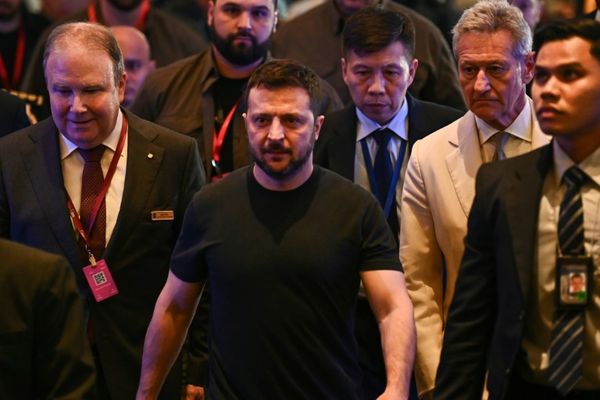
It was 19 January 1983 when Joseph, 23, went missing after driving his father’s truck to transport vegetables from the Metn mountains to markets in Beirut. His family later heard that he had been kidnapped, another victim of Lebanon’s long civil war, which ran from 1975 until 1990.
His sisters Hana* and Fadia* asked at every detention centre and military base in the country about their brother. Eventually, they were told he had been detained in Syria. Despite several trips to detention centres in Syria, including the notorious Tadmur prison, they left without news of Joseph.
During 15 years of war, an estimated 17,000 people went missing, according to the Lebanese government. Many civilians were caught in crossfire, kidnapped because of their religious identity or killed in detention centres.
It was Joseph’s mother’s dying wish to see him again. “If I die before your brother comes back, come knock on my grave. Come knock on my grave when he returns,” she told her daughters.
But with each passing year, preserving and documenting evidence that could help unravel the fate of thousands of missing people becomes harder. Survivors, witnesses and families of victims who remember the details of kidnappings and killings are growing old. The sites of massacres, detentions and burials are being destroyed by neglect or urban development.
Former detainees say others held captive in Syrian prisons could still be alive, while some were likely to have been buried around the detention centres.
Layla Meraachly returned to her family after a year of being held in detention centres operated by Syrian forces in Lebanon and Syria during the civil war, where she was tortured by intelligence officers.
While she was at one centre in north Lebanon, Meraachly saw officers torture a detainee through cracks in her door. “He kept hitting his head on the floor over and over again,” she says. She then heard the officer order soldiers: “Take him, throw him.”
“I wish there was a law or a permission to dig around detention centres because there are mass graves,” says Meraachly.
Two of the centres in north Lebanon where Meraachly was detained are now a coffee shop and a school. The centre where she says she saw officers kill a prisoner has been abandoned. Other mass burial locations have been turned into luxury buildings, highways or agricultural land.
Since the end of the war, multiple official committees have been formed to investigate the fate of people who disappeared – to little avail – and more than 100 clandestine burial sites have been mapped by civil society groups.
In 2018, after years of campaigning, the families of the missing successfully put pressure on the government to pass a law that established the National Commission for the Missing and Forcibly Disappeared, to locate and exhume mass graves and work to trace individuals. However, progress has been slow and it only acquired an office this year.
“The economic and political situation is very difficult: [Lebanon] is in a major crisis. This resulted in our lack of resources,” says Carmen Abou Jaoudé, an expert on transitional justice and a member of the commission. “We also have to work discreetly because otherwise, political parties would try to obstruct the work.”
The commission has been working on its first case: investigating a burial site in the Bekaa where the remains of three fighters were found. They have put the site under protection and are collecting data around the case.
According to Abou Jaoudé, many cases may never get resolved, since construction has already made exhumation impossible in suspected burial sites, especially around downtown Beirut.
Many parents of missing people have died without finding out the truth, but Hana and Fadia, now in their 60s and 70s, are still hopeful. The sisters are part of a database run by the International Committee of the Red Cross to match Joseph’s DNA from remains.
“Even if it’s just a bone, we want them to honour him and bury him. The dead are honoured by their burial,” says Hana.
*Names changed
The stories of Hana, Fadia, and their brother Joseph, Layla Meraachli and many others are told in the feature documentary The Soil and the Sea.






